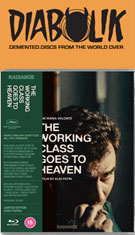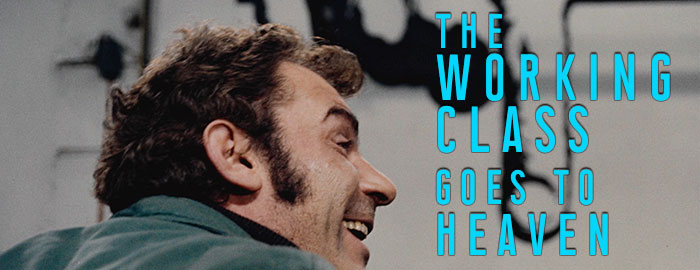Color, 1971, 115 mins. 18 secs.
Directed by Elio Petri
Starring Gian Maria Volontè, Mariangela Melato, Gino Pernice, Luigi Diberti, Corrado Solari
Radiance Films (Blu-ray) (UK RB HD), Raro Video (Blu-ray & DVD) (Italy R0 HD/PAL), Koch Media (DVD) (Germany R2 PAL), / WS (1.85:1) (16:9)
One of the 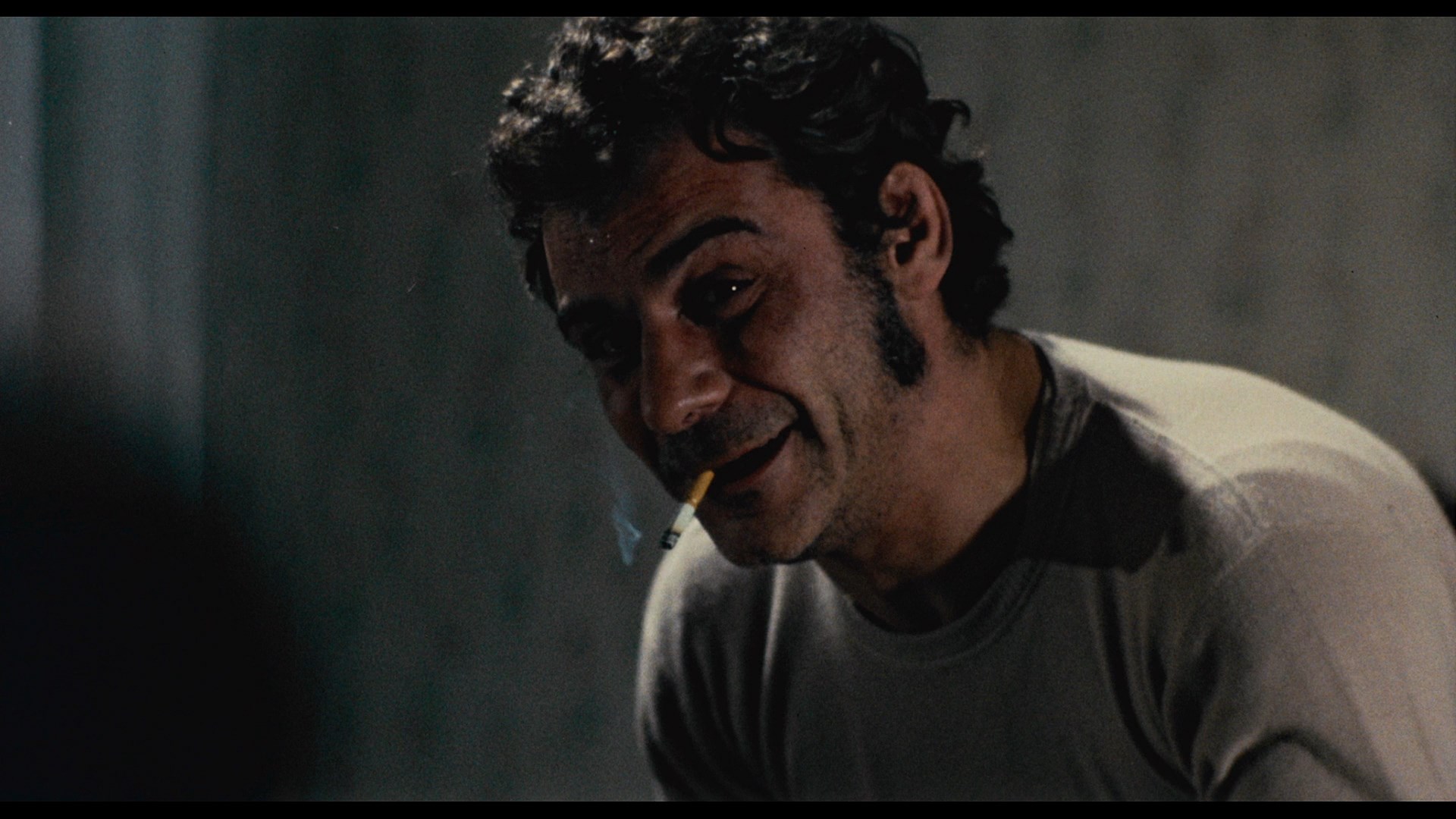 great actor-director partnerships of Italian cinema,
great actor-director partnerships of Italian cinema, 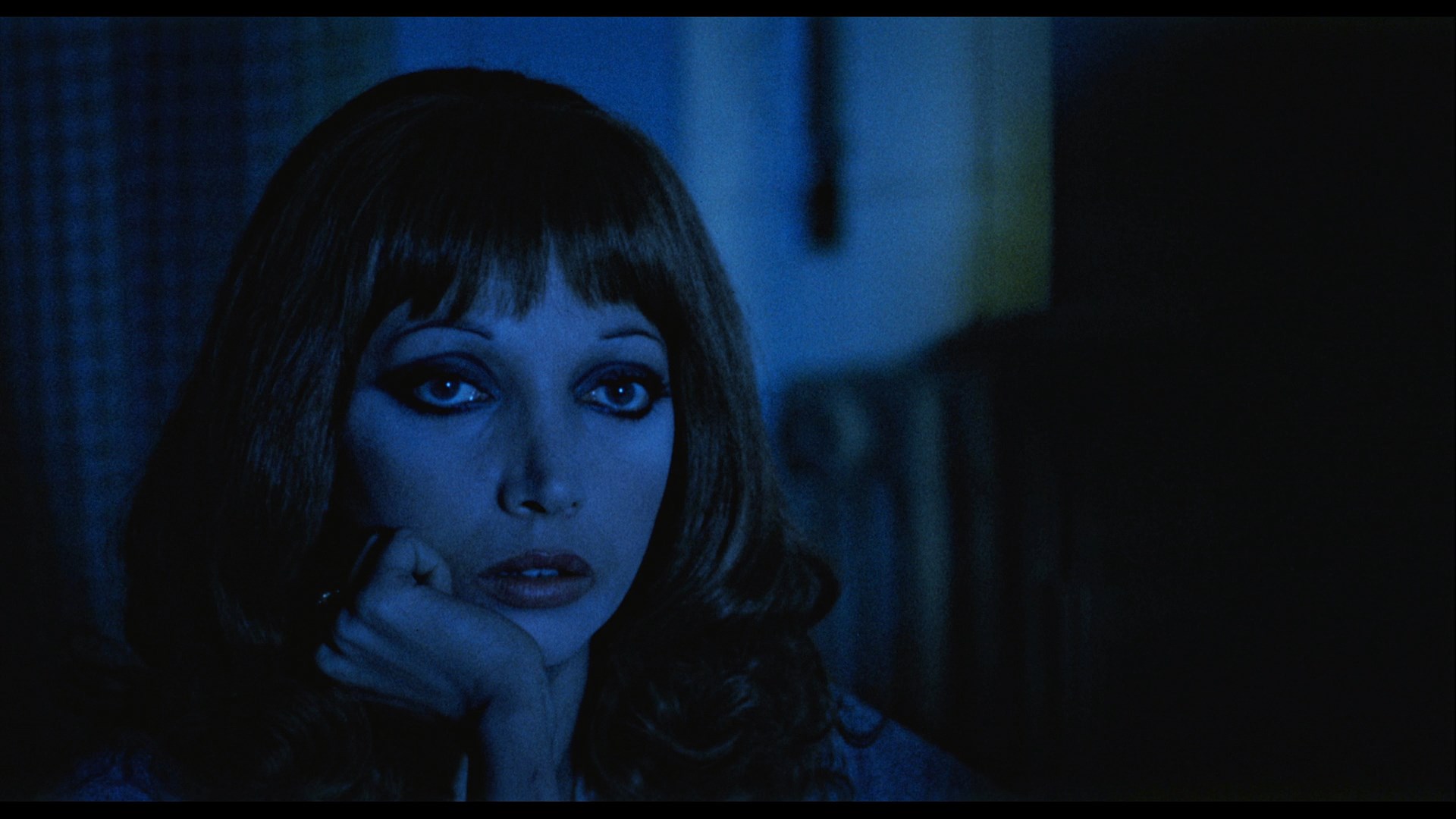 staunch Communist thespian Gian Maria Volontè and filmmaker Elio Petri worked together on four major films including We Still Kill the Old Way, Todo Modo, and the Oscar-winning Investigation of a Citizen Above Suspicion. Not surprisingly, all of their films together tackle the idea of class separation with a very sharp scalpel, and that certainly applies to their immediate follow-up film to Investigation: 1971's La classe operaia va in paradiso or The Working Class Goes to Heaven, given a belated 1975 U.S. run as Lulu the Tool. Though not the most prolific of directors, Petri was always fascinating and had a distinctive touch even when he ventured into sci-fi (The 10th Victim), horror (A Quiet Place in the Country), or dark satire (Property Is No Longer a Theft). This film arrived at a high point in the career of Volontè, who had been rising in popularity thanks to his roles in the first two Sergio Leone / Clint Eastwood westerns and Face to Face. By this point he had just appeared in Jean-Pierre Melville's crime masterpiece Le Cercle Rouge and the searing Sacco and Vanzetti, and this title continued to solidify his reputation in Italy and abroad. However, it hasn't been treated quite so well in the ensuing years, particularly in English-speaking territories where legitimate releases have been very few and far between. Fortunately that oversight was addressed in 2023 with a restored Blu-ray edition that marked one of the inaugural releases from Radiance Films, complete with numerous extras providing context for this dense, unforgettable look at labor struggles from one of Italy's most unique artistic voices.
staunch Communist thespian Gian Maria Volontè and filmmaker Elio Petri worked together on four major films including We Still Kill the Old Way, Todo Modo, and the Oscar-winning Investigation of a Citizen Above Suspicion. Not surprisingly, all of their films together tackle the idea of class separation with a very sharp scalpel, and that certainly applies to their immediate follow-up film to Investigation: 1971's La classe operaia va in paradiso or The Working Class Goes to Heaven, given a belated 1975 U.S. run as Lulu the Tool. Though not the most prolific of directors, Petri was always fascinating and had a distinctive touch even when he ventured into sci-fi (The 10th Victim), horror (A Quiet Place in the Country), or dark satire (Property Is No Longer a Theft). This film arrived at a high point in the career of Volontè, who had been rising in popularity thanks to his roles in the first two Sergio Leone / Clint Eastwood westerns and Face to Face. By this point he had just appeared in Jean-Pierre Melville's crime masterpiece Le Cercle Rouge and the searing Sacco and Vanzetti, and this title continued to solidify his reputation in Italy and abroad. However, it hasn't been treated quite so well in the ensuing years, particularly in English-speaking territories where legitimate releases have been very few and far between. Fortunately that oversight was addressed in 2023 with a restored Blu-ray edition that marked one of the inaugural releases from Radiance Films, complete with numerous extras providing context for this dense, unforgettable look at labor struggles from one of Italy's most unique artistic voices.
Complete with an abrasive Ennio Morricone score that echoes the thudding monotony of industrial work, our tale follows the working and professional life of Ludovico Massa (Volontè), nicknamed Lulù, who wakes up at the crack of dawn next to his snoring girlfriend, Lidia (Melato), to head to blue 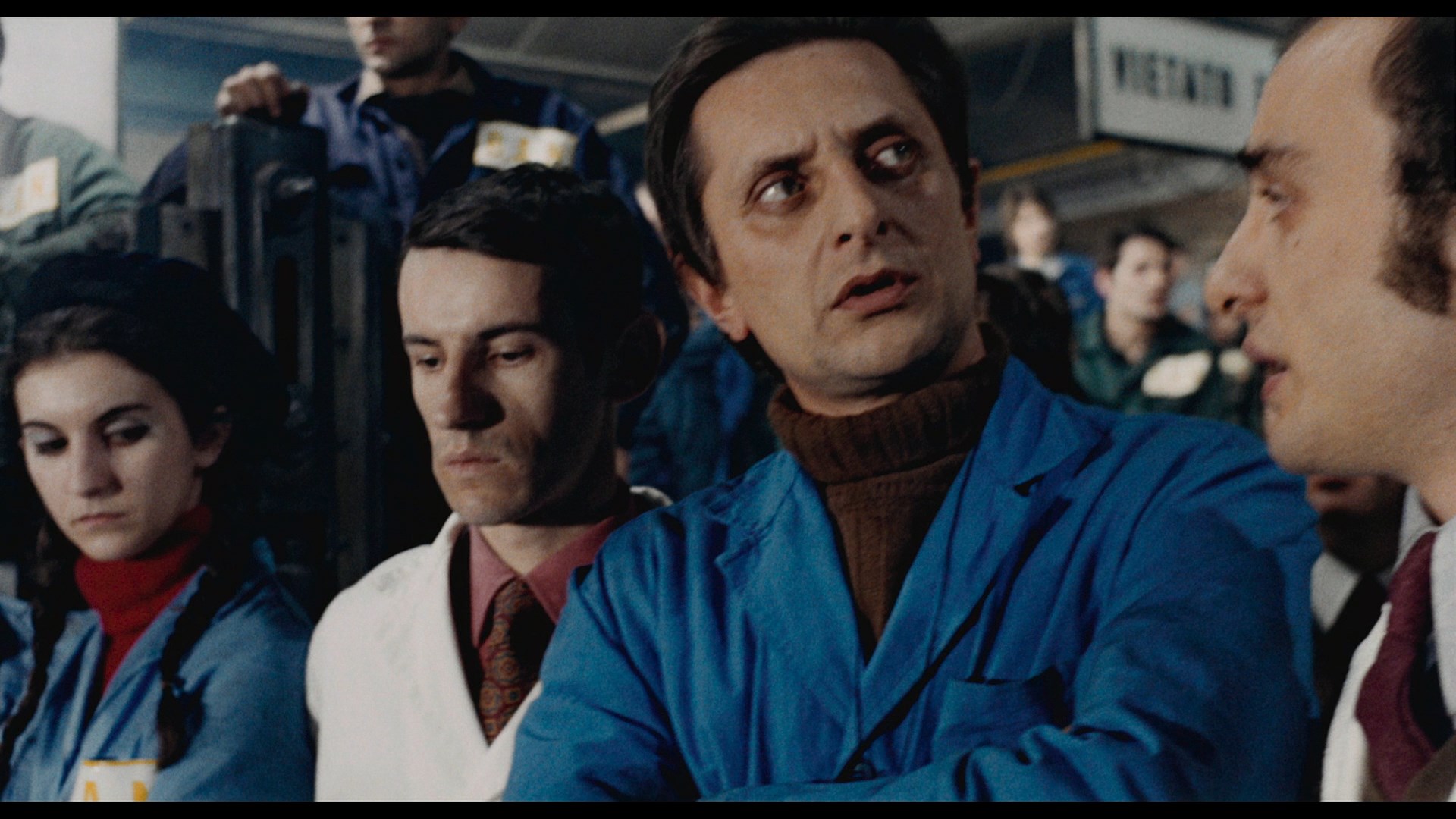 collar job at a nearby factory. Her son lives with them
collar job at a nearby factory. Her son lives with them 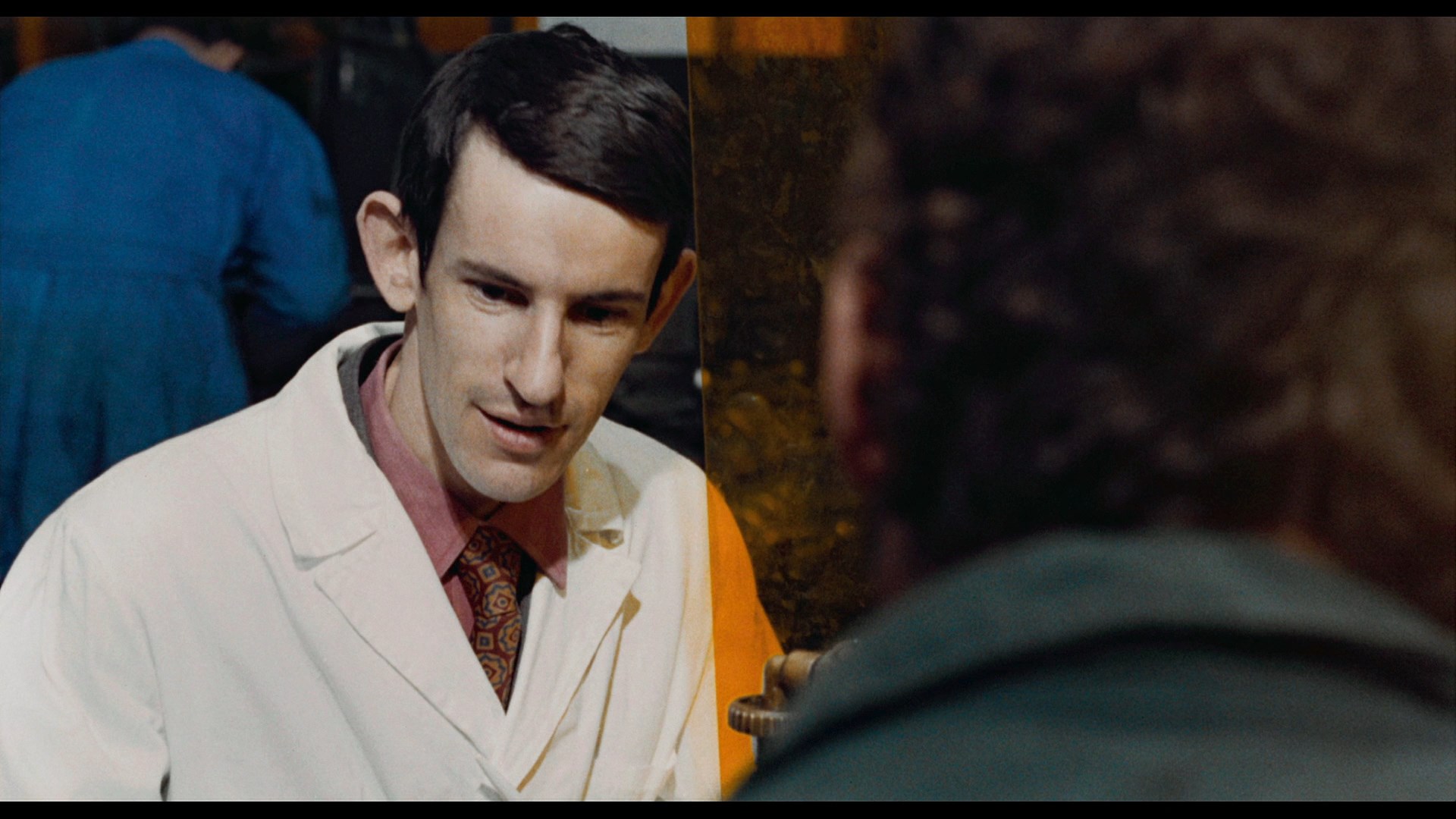 as well, and he uses them as a sounding board for his thoughts on his job where his high performance annoys his coworkers since he's used as the expected standard by management. Arrivals and departures at work come through a gauntlet of megaphone-toting university protesters arguing against unfair labor conditions, a veer to leftist attitudes awakened in Lulù, an agitated type prone to harassing his coworkers (including Suspiria's Flavio Bucci), when one of his fingers gets sliced off in a work accident. The bloody mishap on the assembly line spurs immediate talk of a strike, which puts an escalating strain on both his personal relationships and his job status.
as well, and he uses them as a sounding board for his thoughts on his job where his high performance annoys his coworkers since he's used as the expected standard by management. Arrivals and departures at work come through a gauntlet of megaphone-toting university protesters arguing against unfair labor conditions, a veer to leftist attitudes awakened in Lulù, an agitated type prone to harassing his coworkers (including Suspiria's Flavio Bucci), when one of his fingers gets sliced off in a work accident. The bloody mishap on the assembly line spurs immediate talk of a strike, which puts an escalating strain on both his personal relationships and his job status.
Featuring gritty and sometimes eerie blue-lit cinematography by Luigi Kuveiller (Deep Red), The Working Class Goes to Heaven marks a shift to the darker, more overtly political approach Petri would take for the majority of his 1970s films. The subject matter was obviously something Volontè took to heart, and he's excellent here as a caustic average Joe who finds himself becoming a pawn of sorts on multiple sides. The film doesn't really hammer you over the head with a message, rather showing the circumstances of the time and allowing the viewer to bring their own opinions to the table. As a result, it's an interesting film to revisit every few years since current events and viewer sympathies can inform how it's taken as well.
Though released on Italian DVD and German Blu-ray and DVD, this film has never had an official English-friendly home video release until the U.K. Radiance Blu-ray. The limited edition sports a very nice 2K restoration that reflects the thick, grungy appearance of the film with some occasional vivid bursts of primary colors coming as something of an aesthetic 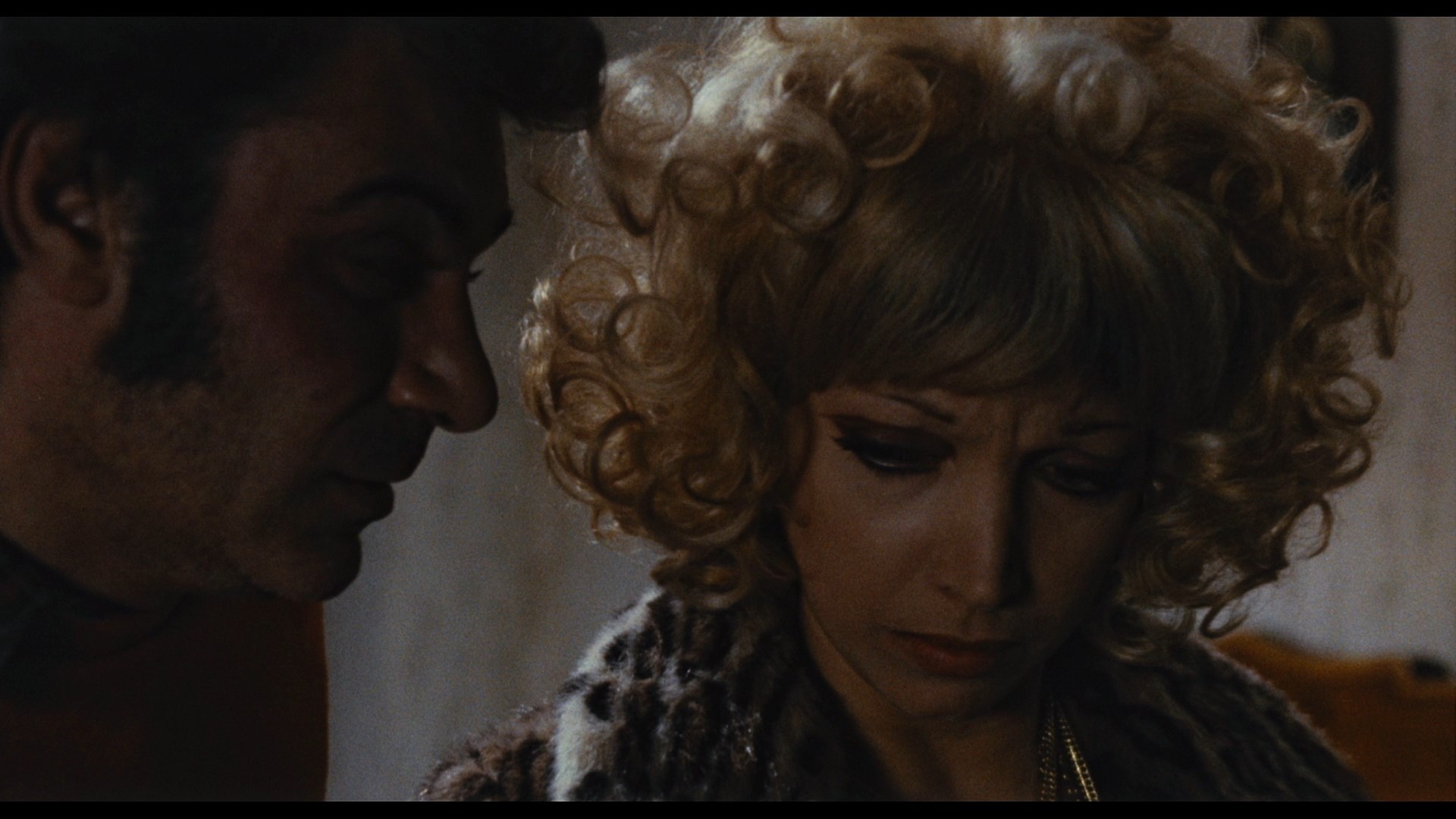 shock. The LPCM 1.0 Italian mono audio also sounds very good and features
shock. The LPCM 1.0 Italian mono audio also sounds very good and features 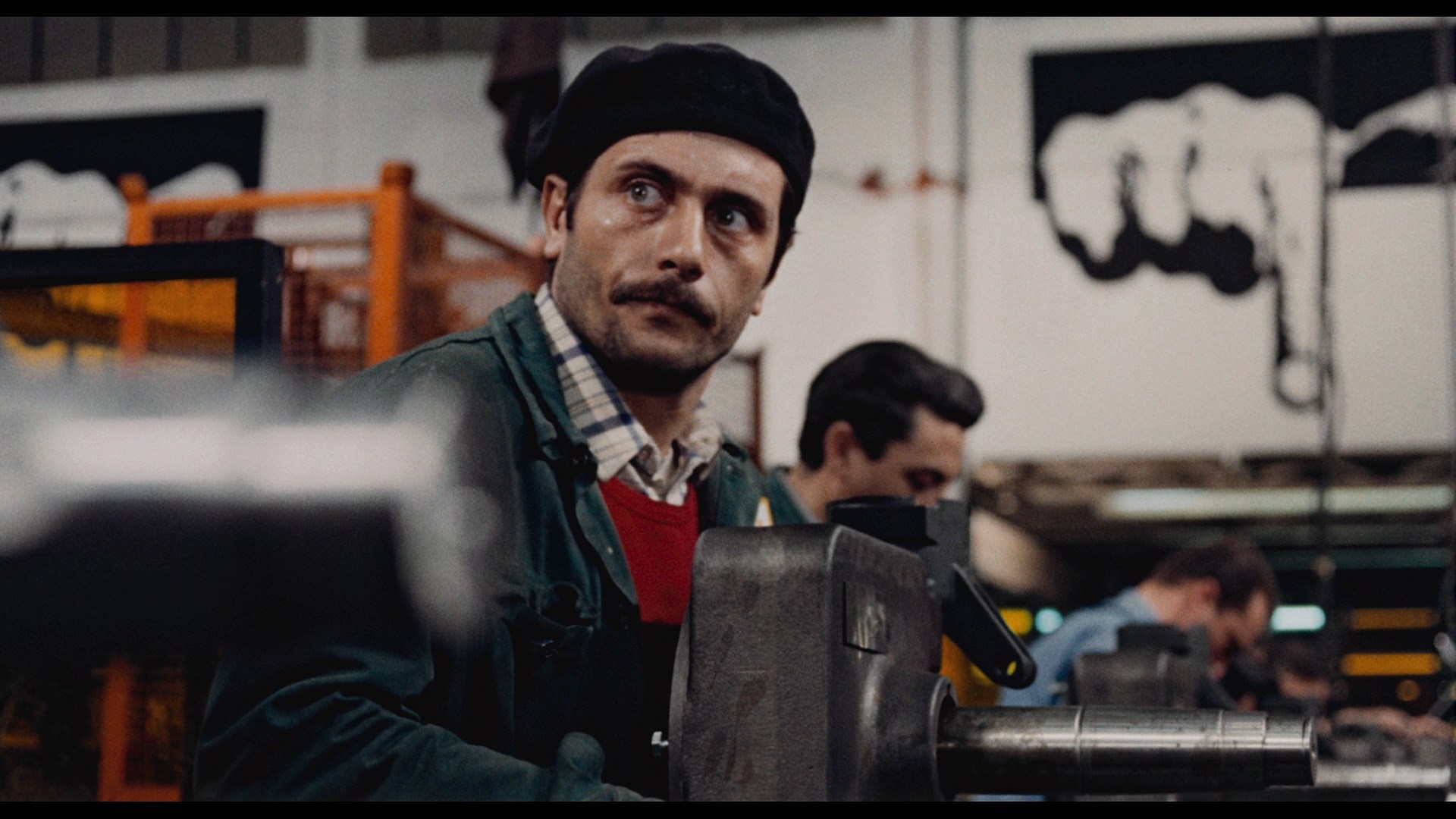 optional English subtitles.
optional English subtitles.
On the extras side, an interview with Elio Petri from the Cannes Film Festival (6m38s) features him speaking in touch-and-go French about the film's look at the distortion of communication, the nature of hysteria in large groups, and the film's development from his prior film. An interview with Gian Maria Volonté from the 1984 French TV show Cinescope (35m13s) finds him sporting a wild bleach-blond mane and speaking in Italian with a translator, covering the bulk of his filmography here including his work with Melville and the Taviani brothers while touching on his commitment to acting and political activism. A 2015 interview with actor Corrado Solari (15m3s) looks back at working with the director and star as well as the social climate of the time, when social tensions were coming to a boiling point that would continue through the rest of the decade. A new video appreciation of Volonté by filmmaker Alex Cox (10m10s) dispels a rumor about the actor's early career and points out the unique nature of his performances including praise for his work on this key film with a character who's the polar opposite of his Vanzetti role. The video essay "Petri's Praxis: Ideology and Cinema in Postwar Italy" (20m38s) by scholar Matthew Kowalski dives further into the left-wing attitudes of the filmmakers and how they reflected the ideological attitudes surrounding it with the working class becoming ever more conscious of its place in the turbulence of capitalism. Finally the borderline experimental "The Working Class Goes to Heaven – Background to a Film Shot in Novara" (49m38s) from 2006 by Serena Checcucci and Enrico Omodeo Salé profiles the real factory where the film was shot, with a slew of extras, real workers, syndicalists, and other people from the area talking about the battles between the counterculture, the powers that be, and fascists around the time. The original Italian trailer is also included (in rough quality, but it's all that survives). The packaging also comes with a reversible sleeve (featuring the original poster art and new design by Time Tomorrow) and an inset booklet featuring essays by Eugenio Renzi, Roberto Curti, and sample archival press coverage.
Reviewed on December 10, 2022.
 great actor-director partnerships of Italian cinema,
great actor-director partnerships of Italian cinema,  staunch Communist thespian Gian Maria Volontè and filmmaker Elio Petri worked together on four major films including We Still Kill the Old Way, Todo Modo, and the Oscar-winning Investigation of a Citizen Above Suspicion. Not surprisingly, all of their films together tackle the idea of class separation with a very sharp scalpel, and that certainly applies to their immediate follow-up film to Investigation: 1971's La classe operaia va in paradiso or The Working Class Goes to Heaven, given a belated 1975 U.S. run as Lulu the Tool. Though not the most prolific of directors, Petri was always fascinating and had a distinctive touch even when he ventured into sci-fi (The 10th Victim), horror (A Quiet Place in the Country), or dark satire (Property Is No Longer a Theft). This film arrived at a high point in the career of Volontè, who had been rising in popularity thanks to his roles in the first two Sergio Leone / Clint Eastwood westerns and Face to Face. By this point he had just appeared in Jean-Pierre Melville's crime masterpiece Le Cercle Rouge and the searing Sacco and Vanzetti, and this title continued to solidify his reputation in Italy and abroad. However, it hasn't been treated quite so well in the ensuing years, particularly in English-speaking territories where legitimate releases have been very few and far between. Fortunately that oversight was addressed in 2023 with a restored Blu-ray edition that marked one of the inaugural releases from Radiance Films, complete with numerous extras providing context for this dense, unforgettable look at labor struggles from one of Italy's most unique artistic voices.
staunch Communist thespian Gian Maria Volontè and filmmaker Elio Petri worked together on four major films including We Still Kill the Old Way, Todo Modo, and the Oscar-winning Investigation of a Citizen Above Suspicion. Not surprisingly, all of their films together tackle the idea of class separation with a very sharp scalpel, and that certainly applies to their immediate follow-up film to Investigation: 1971's La classe operaia va in paradiso or The Working Class Goes to Heaven, given a belated 1975 U.S. run as Lulu the Tool. Though not the most prolific of directors, Petri was always fascinating and had a distinctive touch even when he ventured into sci-fi (The 10th Victim), horror (A Quiet Place in the Country), or dark satire (Property Is No Longer a Theft). This film arrived at a high point in the career of Volontè, who had been rising in popularity thanks to his roles in the first two Sergio Leone / Clint Eastwood westerns and Face to Face. By this point he had just appeared in Jean-Pierre Melville's crime masterpiece Le Cercle Rouge and the searing Sacco and Vanzetti, and this title continued to solidify his reputation in Italy and abroad. However, it hasn't been treated quite so well in the ensuing years, particularly in English-speaking territories where legitimate releases have been very few and far between. Fortunately that oversight was addressed in 2023 with a restored Blu-ray edition that marked one of the inaugural releases from Radiance Films, complete with numerous extras providing context for this dense, unforgettable look at labor struggles from one of Italy's most unique artistic voices. collar job at a nearby factory. Her son lives with them
collar job at a nearby factory. Her son lives with them  as well, and he uses them as a sounding board for his thoughts on his job where his high performance annoys his coworkers since he's used as the expected standard by management. Arrivals and departures at work come through a gauntlet of megaphone-toting university protesters arguing against unfair labor conditions, a veer to leftist attitudes awakened in Lulù, an agitated type prone to harassing his coworkers (including Suspiria's Flavio Bucci), when one of his fingers gets sliced off in a work accident. The bloody mishap on the assembly line spurs immediate talk of a strike, which puts an escalating strain on both his personal relationships and his job status.
as well, and he uses them as a sounding board for his thoughts on his job where his high performance annoys his coworkers since he's used as the expected standard by management. Arrivals and departures at work come through a gauntlet of megaphone-toting university protesters arguing against unfair labor conditions, a veer to leftist attitudes awakened in Lulù, an agitated type prone to harassing his coworkers (including Suspiria's Flavio Bucci), when one of his fingers gets sliced off in a work accident. The bloody mishap on the assembly line spurs immediate talk of a strike, which puts an escalating strain on both his personal relationships and his job status. shock. The LPCM 1.0 Italian mono audio also sounds very good and features
shock. The LPCM 1.0 Italian mono audio also sounds very good and features  optional English subtitles.
optional English subtitles. ![]()
